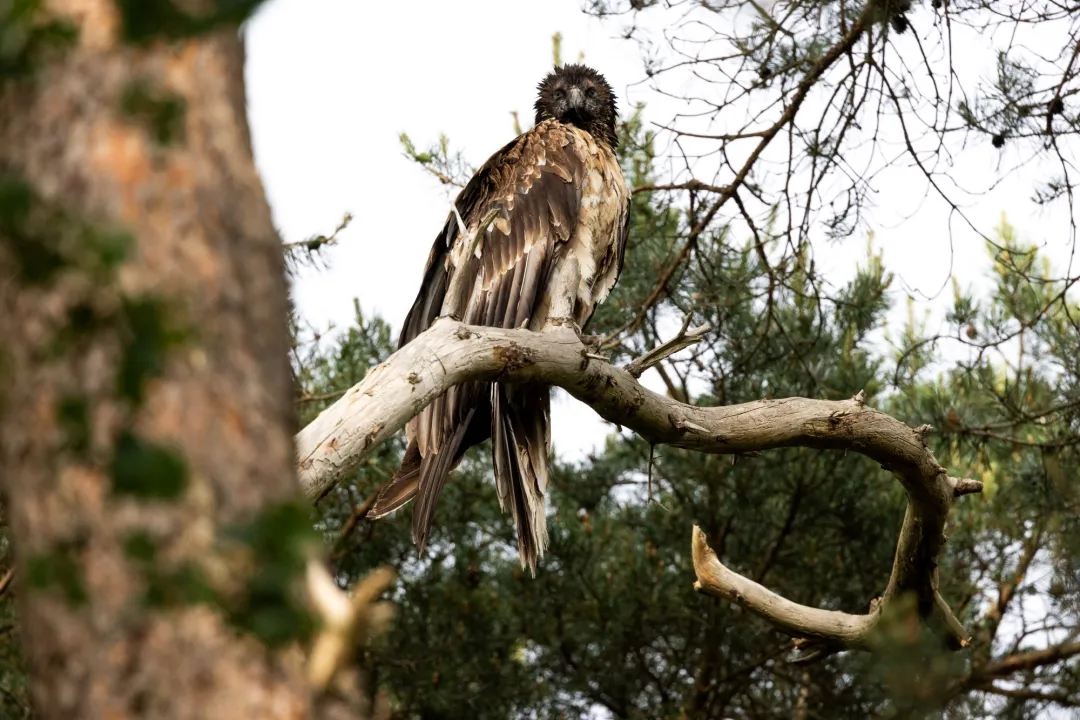The use of poison and other nonselective methods to control wildlife has long been a major threat to biodiversity, particularly in countries like Spain where such practices have deep historical roots. Despite advances in conservation and legislation, these methods continue to push many species to the brink of extinction. A recent study by Moreno et al. (2024) offers a comprehensive examination of the scale, profile of perpetrators, motivations, and ecological impact of this illegal activity, underlining the urgent need for effective measures to protect biodiversity.

The scale and impact of the problem
Illegal wildlife poisoning is not a new issue. Historically, it has been employed to control predators perceived as threats to human livelihoods, particularly in rural areas. This method, often used to protect livestock or crops from predators like foxes or wolves, results in collateral damage to numerous non-target species, including protected and vulnerable ones like vultures.
The study reveals that between 1992 and 2017, over 9,000 poisoning episodes resulted in more than 21,260 animal deaths, likely underestimating the actual scale due to undetected or unreported incidents. The most common method used is poison baits, often containing highly toxic substances like carbamates, which are primarily legal plant protection products misused for wildlife control. These substances pose severe risks, not only to wildlife but also to human health, due to their persistence in the environment and potential for secondary poisoning through the food chain.
Perpetrators and their motivations
The study’s focus on the socio-demographic profile of perpetrators provides valuable insights into the motivations behind these acts. The researchers reviewed 42 cases investigated by SEPRONA (Environmental Protection Service of the Guardia Civil) between 2007 and 2021, spanning various regions, with Andalusia, Murcia, and the Valencian Community being the most affected areas. The persistence of these cases across different locations underscores the nationwide nature of the problem.
All reviewed cases involved male perpetrators with an average age of 60.9 years. Most were Spanish nationals (95.2%), typically local residents engaged in rural activities such as farming or hunting. Many were unaware of the illegality of their actions, reflecting a culture where such practices were normalized over generations.
The primary motivation behind these acts is the perceived need to protect crops, livestock, and game from species considered pests or threats. In some cases, these actions were driven by a desire to maintain traditional hunting grounds free from competitors, whether they be natural predators or rival hunters. Carbamate insecticides were the most commonly used toxicants, followed by organophosphate insecticides, which, while legal for certain agricultural uses, are often misused to target wildlife.
Ecological consequences
The consequences of nonselective hunting methods are far-reaching and devastating. Poisoned baits, laced with highly toxic substances, affect a broad range of species, from small mammals and birds to larger predators like wolves. These substances not only kill the intended animals but also pose significant risks to non-target species like vultures due to their scavenging nature.

The persistence of toxicants in the environment means they continue to pose a threat long after their initial use, leading to secondary poisoning and further disrupting ecosystems. This disruption affects food chains, reduces biodiversity, and fundamentally alters the natural balance, with potentially detrimental impacts on entire ecosystems. Vulnerable species like the Bearded Vulture (Gypaetus barbatus) are particularly at risk, further threatening their already precarious populations and undermining conservation efforts.
Spain’s response: A model for Europe?
Spain has been a pioneer in combating illegal poisoning, implementing a comprehensive national strategy in the early 21st century. This strategy encompasses legislative changes, enforcement through the Guardia Civil’s Environmental Protection Service (SEPRONA), and the development of specialized dog handler teams to detect poisoned baits. Educational campaigns aimed at changing attitudes among farmers and hunters have also been essential in reducing the use of poison.
Two key initiatives have been crucial in Spain’s efforts: the deployment of specialized dog handler teams and the development of risk maps. These maps enable authorities to identify hotspots for illegal activity and target their interventions more effectively.
These initiatives, coupled with stricter enforcement and monitoring, are slowly turning the tide against this deeply entrenched practice. However, the ongoing nature of the problem suggests that more needs to be done to fully eradicate illegal poisoning.
Recommendations for future research
To further understand the complexities of nonselective hunting methods and their impact on wildlife, several avenues of research are recommended. Firstly, analyzing more case files would provide valuable insights into perpetrator characteristics, enabling the development of effective prevention strategies. Additionally, extending the study to the European Union would allow for a more comprehensive understanding of the phenomenon, including the identification of specific countries most affected. Comparative analyses of poisoning characteristics across different geographical areas within the EU would also be beneficial, providing a nuanced understanding of the variations in this practice. Finally, investigating the accessibility of sites where nonselective methods are employed and its impact on the use of these methods would shed light on the environmental and social factors that contribute to this issue.
Poisoning remains a global threat to biodiversity, but significant progress has been made in combating it. While the fight is far from over, continuous efforts to educate the public, enforce laws, and adapt policies are crucial to further reducing the impact of poisoning. These ongoing initiatives are essential to safeguarding wildlife and ensuring the protection of vulnerable species for future generations.
Our work in mitigating poisoning and working with Spanish authorities
The BalkanDetox LIFE project, with its Wildlife Crime Academy, has drawn inspiration from Spain’s effective approach to tackling wildlife crime. In collaboration with Spanish authorities, particularly from the regional government of Andalusia, the project has trained professionals in enforcement, conservation, and forensics from the Balkans and beyond. By leveraging Spain’s expertise, these training programmes provide participants with the skills to effectively investigate and prosecute wildlife crimes in their respective countries.
Source:
Moreno, J.A. et al. (2024) ‘A descriptive study of poisoners and users of other indiscriminate means to illegally control wildlife in Spain’, Conservation Science and Practice, 6(8). doi:10.1111/csp2.13194.



